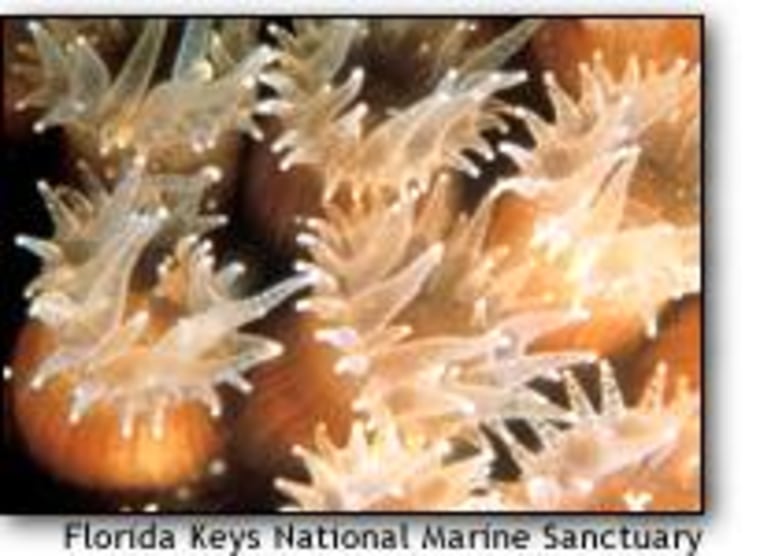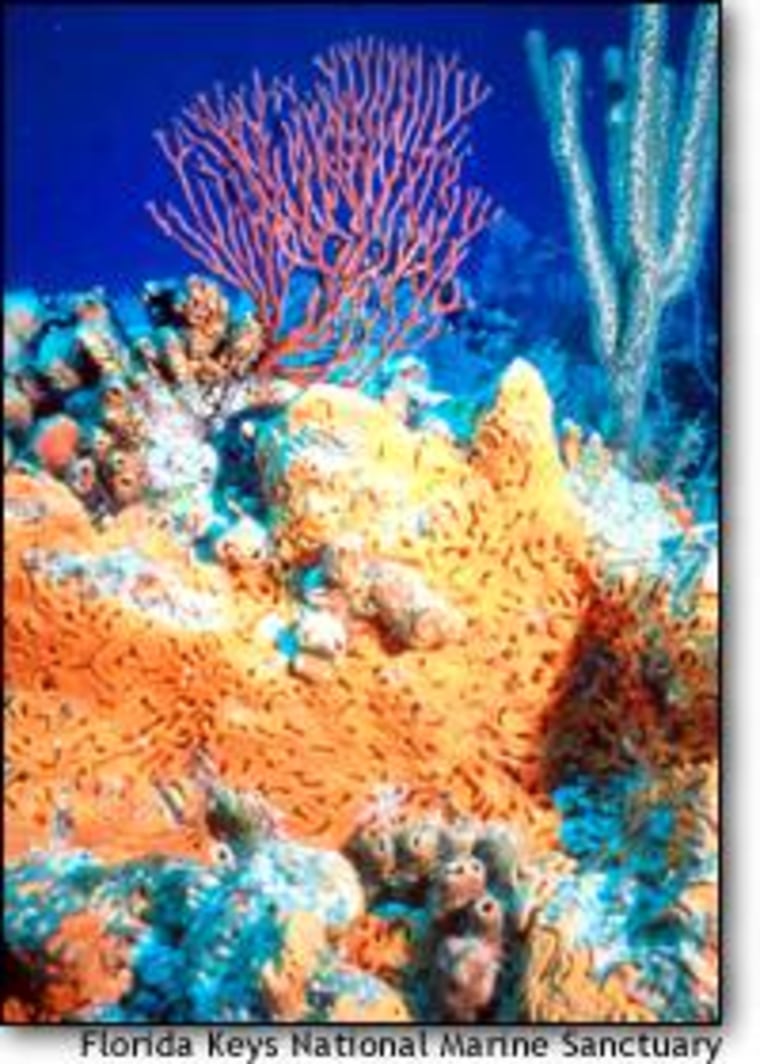In its first ever report card on the health of coral reefs in U.S. waters, the government on Friday said every reef system has problems and that the worst are in Florida and the U.S. Caribbean. Live coral cover in the Florida Keys has declined 37 percent in five years, while 23 of 31 coral reef fishery stocks in the U.S. Caribbean are overfished.
Some U.S. reefs are in good to excellent health, the report says, but it adds that “every reef system has suffered varying degrees of impact” from human and natural disturbances.
Florida and U.S. Caribbean reefs are in the poorest condition, mainly because of nearby dense populations, as well as impacts from hurricanes, disease, overfishing and a proliferation of algae.
More than 10.5 million people now live in U.S. coastal areas adjacent to shallow coral reefs, the National Oceanic and Atmospheric Administration said in releasing the report. Every year, 45 million people visit these areas, NOAA added.
Besides Florida and the U.S. Caribbean, U.S. waters with reefs are: other parts along the Gulf of Mexico; Hawaii; and Pacific island territories such as Guam and American Samoa.
‘GLOBAL DECLINE’
The Interior Department, the nation’s steward for natural resources, praised the report and its value as a baseline for future studies. “It’s a valuable tool for raising public awareness about the global decline of these unique treasures,” Interior Assistant Secretary Craig Manson said in a statement.
While they look like rock formations, coral reefs are actually living organisms, having evolved over 25 million years into vital anchors for fish and other marine life. They also generate lots of money: NOAA estimates that tourism in U.S. coral reef areas generates more than $17 billion annually. Commercial fishing generates an additional $247 million a year.
NOAA said that 27 percent of the world’s shallow-water coral reefs may already be beyond recovery and that 66 percent are now severely degraded.
Florida and Caribbean figures cited by NOAA included these:
Live coral cover in the Florida Keys has declined 37 percent over the past five years.
Of 31 coral reef fishery stocks in federal waters, 23 are overfished in the U.S. Caribbean.

Coral disease is especially high in the Caribbean, where more than 90 percent of the once abundant longspine sea urchins died in the early 1980s. Vital in keeping coral from being overgrown and killed by algae, the urchins have since recovered to just 10 percent of their original numbers off the coasts of Florida, Puerto Rico and the U.S. Virgin Islands.
In 20 years, white-band disease has killed nearly all the elkhorn and staghorn corals off the coasts of St. Croix, Puerto Rico and southeast Florida.
NOAA said that globally, the top human pressures on reefs are coastal pollution, coastal development and runoff, and destructive fishing practices. These are followed by ship groundings, diseases, changing climate, trade in coral and live reef species, alien species, marine debris, harmful tourist activity and tropical storms.
ACTION PLAN, WEB SITE
NOAA also released a report to Congress outlining specific actions to protect reefs, including
continued mapping and monitoring.
NOAA scientists recently completed a milestone by using new techniques to map reefs around Puerto Rico and the U.S. Virgin Islands.
“The new classification is a vital management tool that tells us where the reefs are, what lives on them and what relationships may be to neighboring habitats and human activities,” NOAA Administrator Conrad Lautenbacher said in a statement. “We now have a complete snapshot of the U.S. Caribbean region, a clear, consistent baseline for future mapping and a solid model to implement good management in other regions.”
That and other reef data are on a new NOAA Web site — www.coris.noaa.gov. — with nearly 20,000 aerial photos, navigational charts, photo mosaics, monitoring reports, professional exchanges and much more.
The coral reef report will be placed online at http://www.coralreef.noaa.gov.
